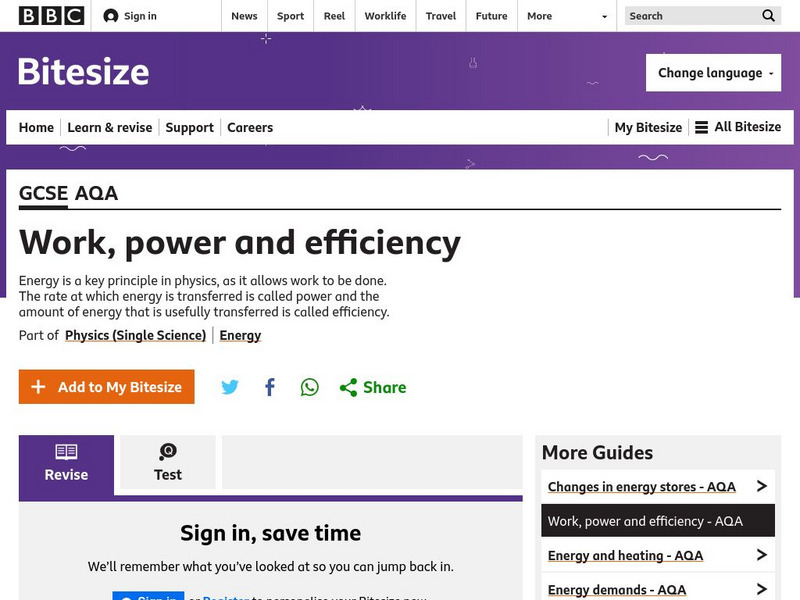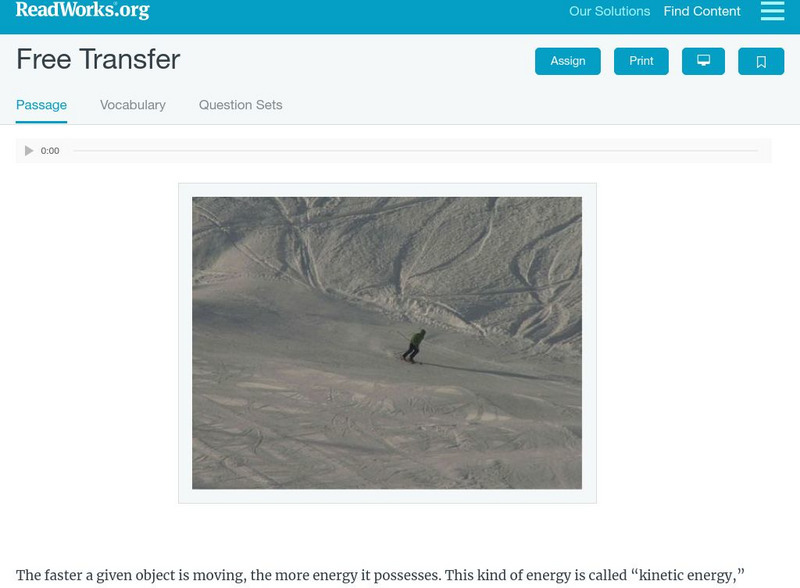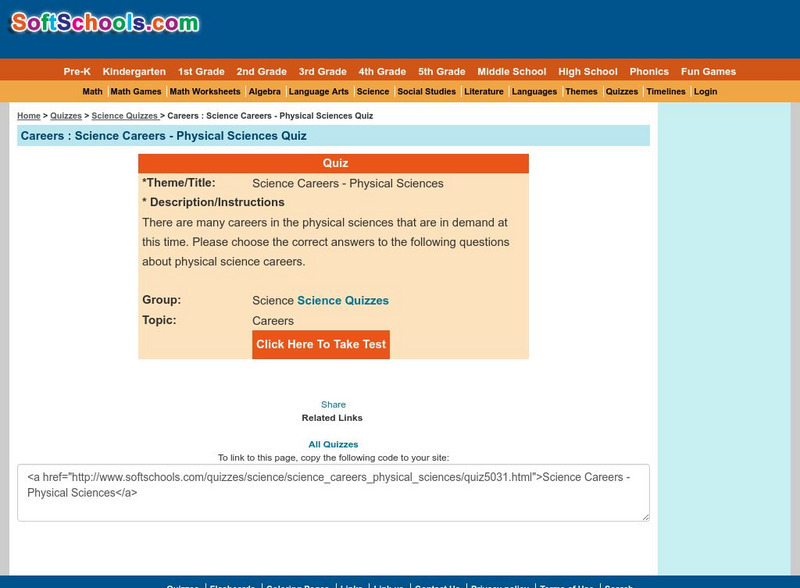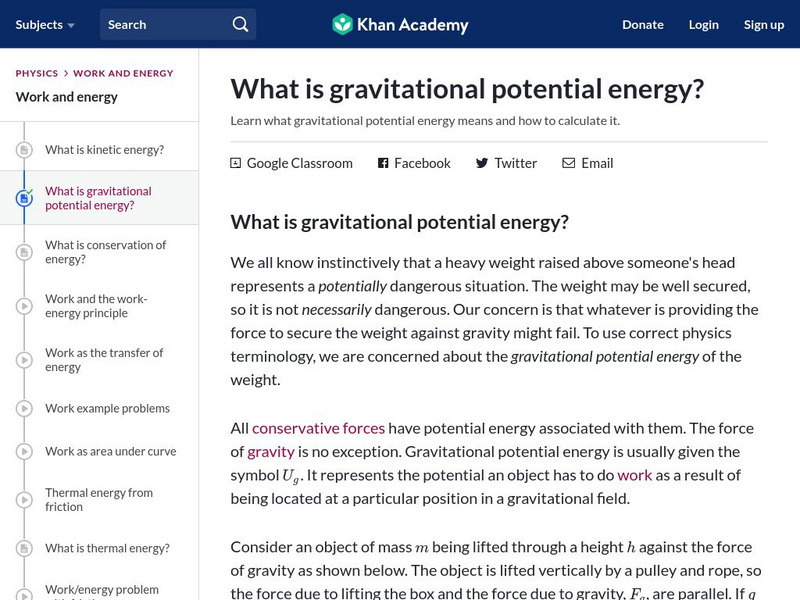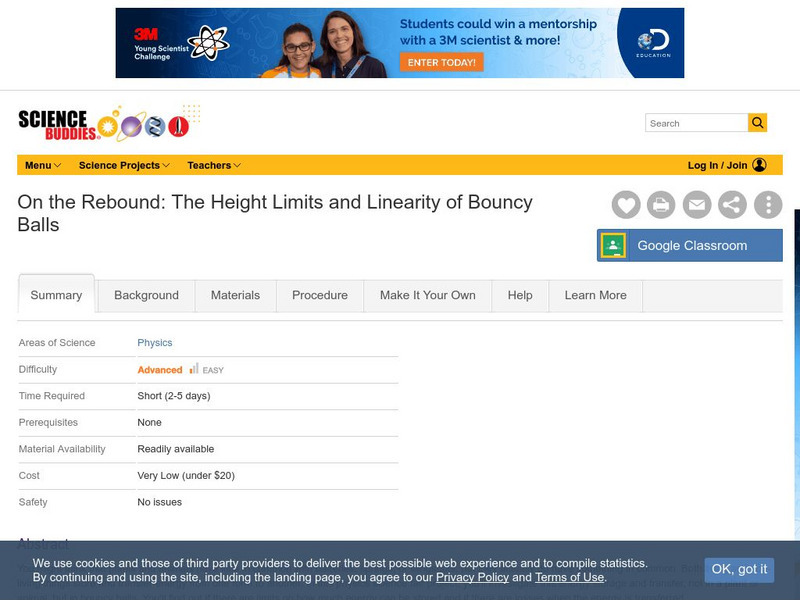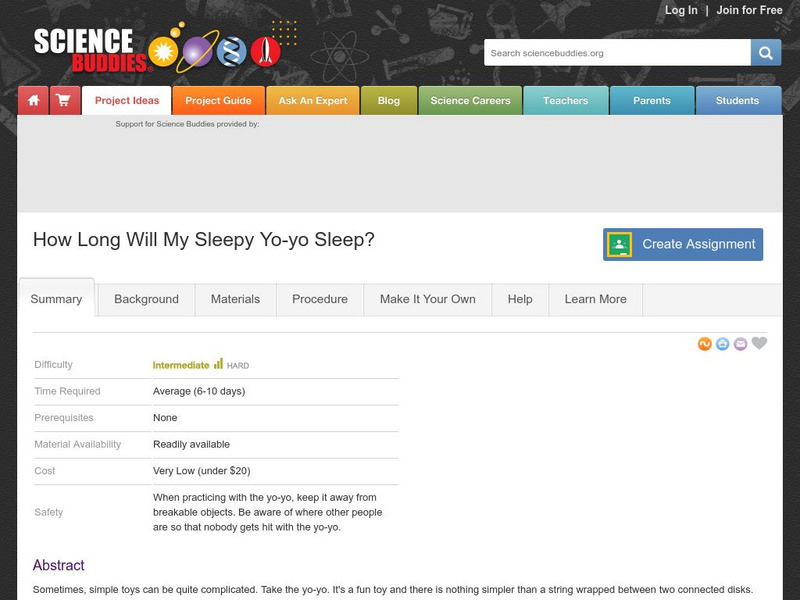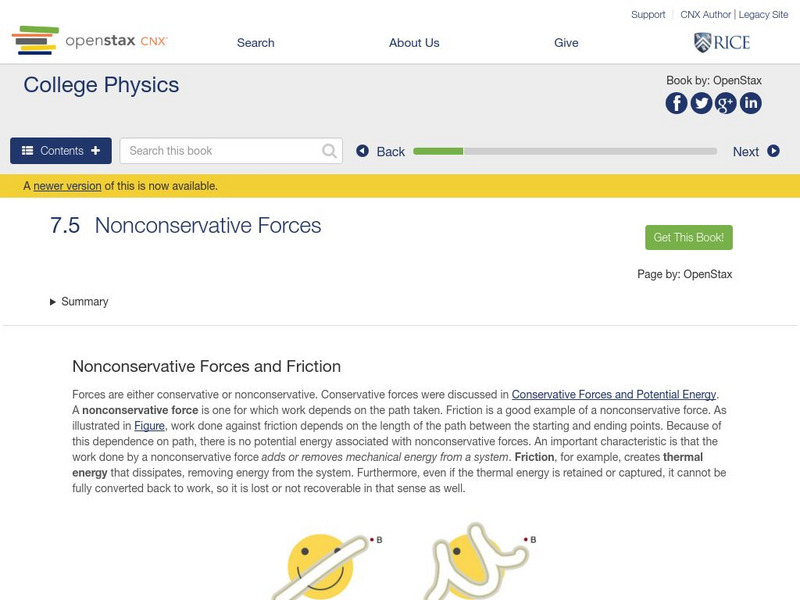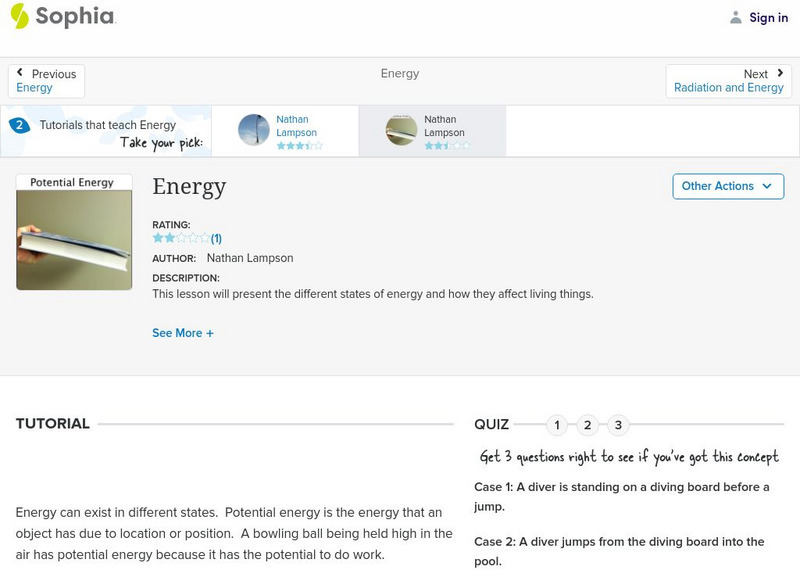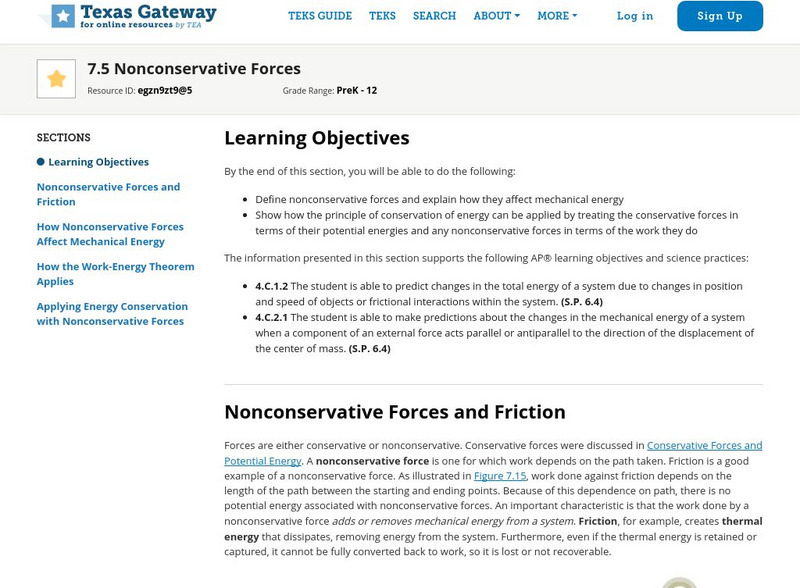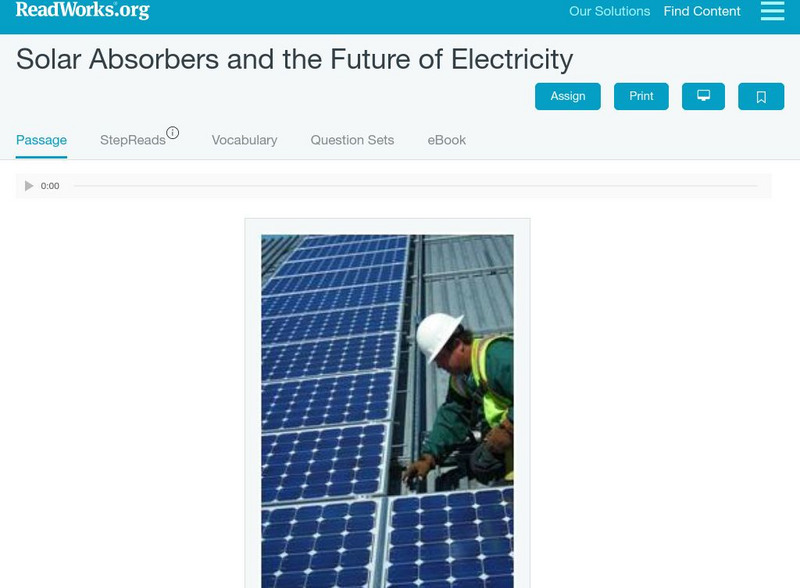TeachEngineering
Teach Engineering: Work and Power: Waterwheel
Investigating a waterwheel illustrates to students the physical properties of energy. They learn that the concept of work, force acting over a distance, differs from power, which is defined as force acting over a distance over some...
BBC
Bbc: Gcse Bitesize: Work, Power and Efficiency
This lesson focuses on energy and power. Energy is a key principle in physics, as it allows work to be done. The rate at which energy is transferred is called power and the amount of energy that is usefully transferred is called...
Georgia State University
Georgia State University: Hyper Physics: First Law of Thermodynamics
At this site from Georgia State University the first law of thermodynamics is stated and explained. The meaning of internal energy and enthalpy is discussed. Equations are given and the importance of a system analysis is discussed.
Read Works
Read Works: Free Transfer
[Free Registration/Login Required] This passage discusses different types of energy transfer. This text is a stand-alone curricular piece that reinforces essential reading skills and strategies and establishes scaffolding for vocabulary...
Soft Schools
Soft Schools: Physical Science Careers Quiz
Take an interactive quiz over physical science careers. After completing the quiz, check your score, and then revisit any incorrect question for further review.
Khan Academy
Khan Academy: What Is Conservation of Energy?
Learn what conservation of energy means, and how it can make solving problems easier.
Khan Academy
Khan Academy: Basal Metabolic Rate and Energy Expenditure
A test prep practice question for the MCAT Chemical and Physical Foundations of Biological Systems Passages.
Khan Academy
Khan Academy: What Is Gravitational Potential Energy?
This site explains what gravitational potential energy means and how to calculate it.
Physics Classroom
The Physics Classroom: Work, Energy, and Power: Mechanical Energy Is Conserved
In this interactive exercise, explore the quantitative relationship between work and mechanical energy in situations in which there are no external forces doing work.
Physics Classroom
The Physics Classroom: Work, Energy, and Power: Application/practice Questions
Through illustrated examples and practice problems, students apply the relationship between work and mechanical energy change to a variety of motion scenarios in order to test our understanding.
Other
Univ. Of Delaware Physics: More Semiconductor Physics
The University of Delaware Physics Department provides this site from a site titled "Silicon, Circuits, and the Digital Revolution," here is a series of four pages which explain the details behind how semiconductors work. An introduction...
Physics Aviary
Physics Aviary: Practice Problems: Work Done in Moving Charge
Determine the energy that must be added to a system to move a charge from one location to another in the vicinity of another charge.
Science Buddies
Science Buddies: The Height Limits and Linearity of Bouncy Balls
You might think that plants and animals have little in common with batteries, springs, or slingshots, but they actually do have something in common. Both living and non-living things store and transfer energy from one form to another. In...
CK-12 Foundation
Ck 12: Power
[Free Registration/Login may be required to access all resource tools.] This online tutorial asks students to calculate the mechanical energy of power generated within a physical system.
Science Buddies
Science Buddies: How Long Will My Sleepy Yo Yo Sleep?
Yo-yo's are a fun toy and there is nothing simpler than a string wrapped between two connected disks. But there's a lot of physics that makes a yo-yo work. In this science fair project, learn more about how and why a yo-yo works. You...
OpenStax
Open Stax: Nonconservative Forces
In the following interactive students will begin to define nonconservative forces and explain how they affect mechanical energy. They will show how the principle of conservation of energy can be applied by treating the conservative...
Ducksters
Ducksters: Physics for Kids: Motion Glossary and Terms
Kids learn about glossary and terms in the science of physics and motion. Definitions for words such as momentum, force, work, energy, gravity, scalar, vector, power, and more.
Sophia Learning
Sophia: Energy: Lesson 4
This lesson will present the different states of energy and how they affect living things. It is 4 of 7 in the series titled "Energy."
Physics Classroom
The Physics Classroom: Work, Energy, and Power: Internal vs. External Forces
Through illustrated examples and interactive examples, students learn about the two categories of forces are referred to as internal forces and external forces.
Texas Education Agency
Texas Gateway: Nonconservative Forces
By the end of this section, you will be able to define nonconservative forces and explain how they affect mechanical energy, and to show how the principle of conservation of energy can be applied by treating the conservative forces in...
Rube Goldberg
Rube Goldberg Inc.: Rube Goldberg Gallery
All the important information on Rube Goldberg, including cartoons of Rube Goldberg machines complete with descriptions of how each machine works.
Read Works
Read Works: Soft Cell
[Free Registration/Login Required] An informational text about solar cells being made of plastic. A question sheet is available to help students build skills in reading comprehension.
Read Works
Read Works: Solar Absorbers and the Future of Electricity
[Free Registration/Login Required] An informational text about solar panels being used to create electricity. A question sheet is available to help students build skills in reading comprehension.
Cosmo Learning
Cosmo Learning: Fundamentals of Physics
A collection of video lectures from a fundamentals of physics course taught at Yale University. The course is an introduction to physics and discusses Newtonian mechanics, special relativity, gravity, thermodynamics, and waves. Course...



